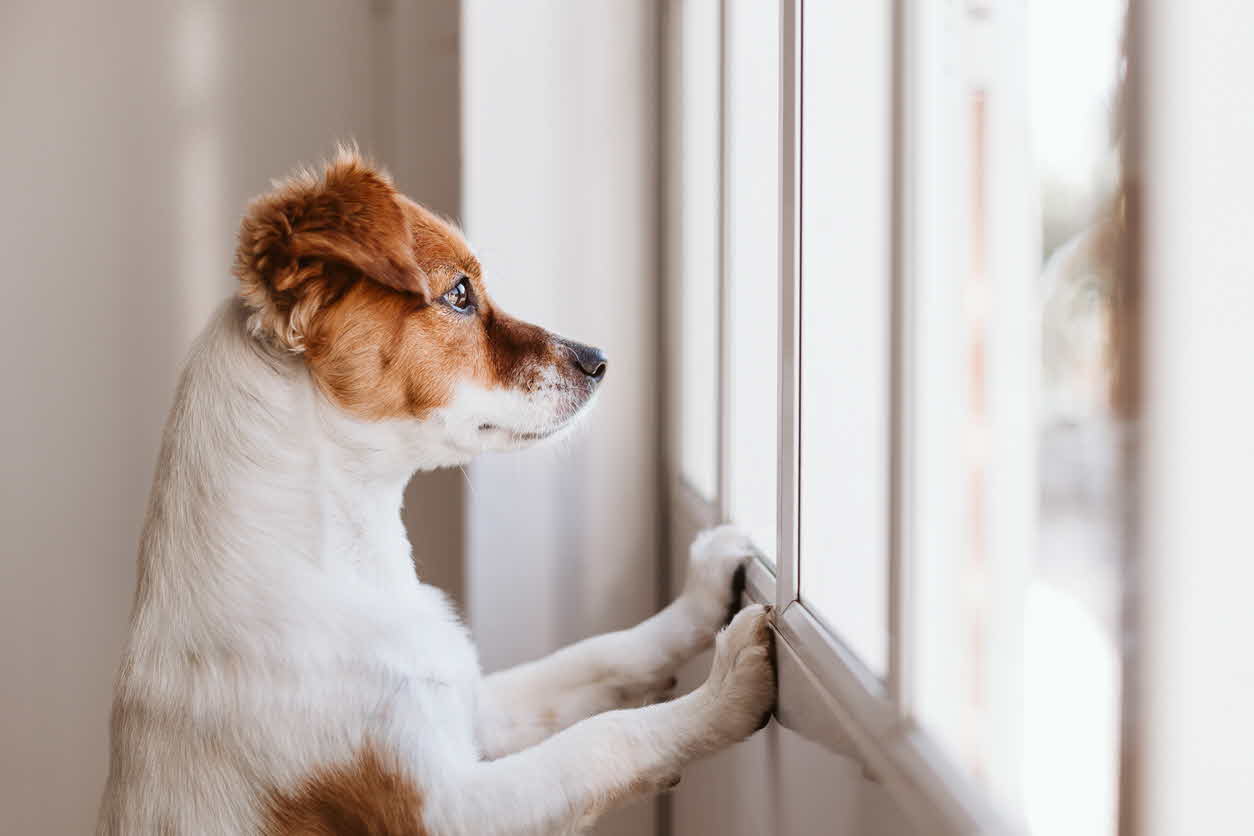
As COVID-19 restrictions relax in some parts of the country and we start to return to a new “normal", many people will be returning to work. Your pet may be used to having you around more, which means they also have likely been enjoying the extra cuddles, walks and maybe even some extra snacks!
Dogs
There is the possibility that returning to work may create some separation anxiety issues for your canine friend, and if you have any concerns about your pooch, should always turn to your veterinarian for help.
Symptoms of separation anxiety in dogs may include:
- Vocalising
- Destructive behaviour
- Pacing
- Weight loss
- House soiling
Top tips to help reduce your dog's anxiety and help to prepare them for your return to work:
- If you've been home with your dog a lot recently, start with some small outings without your pooch. Begin by leaving your dog alone for only five minutes and then extend this to twenty minutes, then later an hour and then longer. This will help them adjust to you being away from them during the day.
- Try not to make a huge fuss when you return from being out as your dog will start to anticipate these arrivals, and this can exacerbate your dog's anxiety.
- Take your dog for a walk before you leave the house for work to help stimulate their mind and expend some energy before they are left at home for an extended period.
- Make sure you leave your dog with some toys and consider something like a puzzle food toy to keep them occupied and take their mind off the separation. Ask your veterinarian for more information.
- Leave the radio or television on for company.
- Use an anxiety-reducing collar - ask your veterinarian for more information about this product.
You can read more about Canine Separation Anxiety here.
Cats
Cats are generally better at coping with 'alone time' than dogs, but there are some cats who may become stressed when you are no longer at home all day.
Sign of anxiety in cats:
- Increased vocalisation
- Changes in appetite
- Unusual behaviours - urinating out of the litter box, or in unexpected places such as on your bed or urine spraying (read more about spraying here)
Here are a few things you can do to help your cat with the transition:
- Start with small steps, and leave the house for short periods, reassuring your cat that you always come back.
- Keep your cat's routine as close to what is 'normal' as possible - similar feeding times and keep the litter box set up the same (read more about cats and toileting here)
- Set aside some time to play with your cat daily to help provide some stimulation and 'fun' time - cats love 'wands' and 'ticklers' with feathers
- Place a pot of catnip in the house (note: only some cats will respond to this)
- Plug in a pheromone diffuser to help your cat feel safe and secure during the transition process.
Read more about dog and cat behaviour here.
You should always ask your veterinarian for advice if you are worried about your pet’s behaviour.
